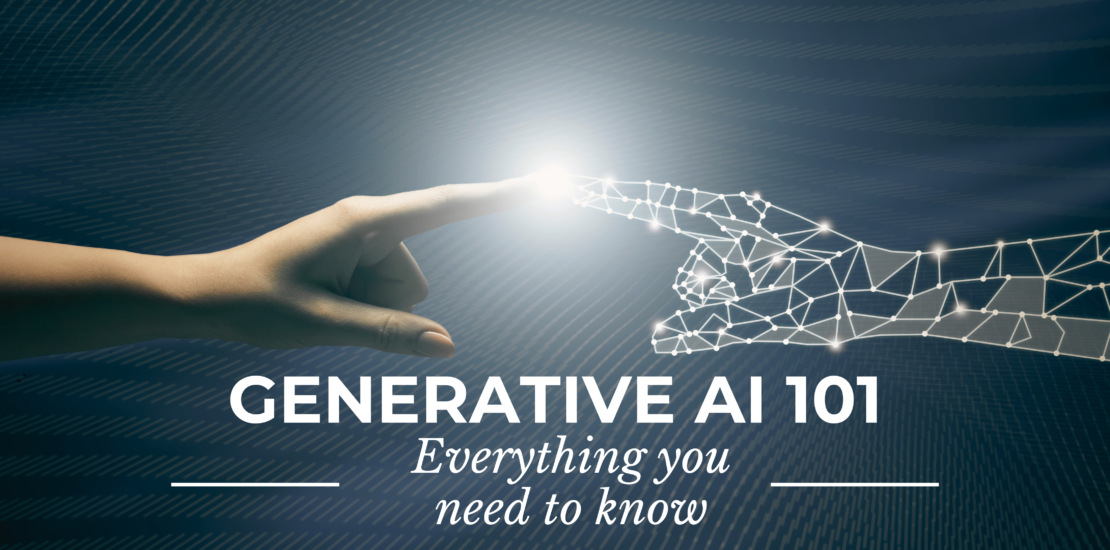- March 12, 2024
- Posted by: Stacey Wisniewski
- Categories: Blog, Marketing Strategy

Generative AI is now mainstream.
As we look back in history, it is easy to see how technology has changed the way we communicate with each other and the world. Where we once relied on telephones connected to wire lines in our homes, we now carry smartphones in our pockets to wirelessly call, text, send emails, and browse our social media feeds effortlessly in seconds.
Even more incredible is the shrinking adoption rate of technologies over time. It took 75 years for the telephone to become mainstream and reach 100 million users. A century later the mobile phone, launched in 1983, took 16 years to hit the 100 million user mark. Finally, the Internet, which became accessible to the public as the world wide web in 1994, took just 7 years. Over the past twenty years, Gen Z, who grew up with the Internet and have never known life without a smartphone, are driving the rise of social media platforms. Not only do they use them to communicate with each other, but they use them to get up to speed on current events, trends, new brands and products, and to be entertained.
Morning Consult’s 2024 report found that 53% of Gen Z’ers use social media platforms four or more hours per day – see chart below. Also, it found that 68% use social media for entertainment and scrolling, and only 19% use it for messaging and communication – showing how much social platforms have evolved.
Here is a chart from Demand Sage showing the “road to 100 million users” for platforms in the 20th century. Notable is that some platforms took as much as 5 years (Twitter) while others took as little as 9 months (TikTok). Most interesting, however, is the generative AI platform launched late last year (I don’t count Threads as it is an offshoot of Instagram), ChatGPT, hit 1 million users in 5 days, 100 million users in just 2 months, and currently has (as of January 2024) over 180.5 million monthly users.
Generative AI is not just a popular technology today. The market for generative AI is expected to grow from $44B in 2023 to $668B in 2030 (Source: Damco Group, Jan 2024). That is a CAGR of 47.5%, which explains why businesses of all sizes are looking at ways to adopt and implement this disruptive technology.
Generative AI is the biggest marketing trend of 2024.
According to HubSpot’s 2024 State of Marketing Report, generative AI is the top marketing trend of 2024. Marketers will use it as a content marketing assistant with 63% saying that most content in 2024 with be created with the help of generative AI.
What is generative AI?
One of the best definitions of generative AI – at least, the one that I found easiest to understand – comes from Technopedia.com:
Generative AI describes any type of artificial intelligence that can create new content. This content can include text, images, video, or audio clips. Generative AI uses machine learning, neural networks, and deep learning techniques to produce content that resembles human-created output. This type of AI learns patterns from training data and generates new, unique outputs with the same statistical properties.
Early models like Google’s Deep Dream were designed specifically to process images and create engaging, new visual effects, but its capabilities did not extend to other types of data. Now, most generative AI models like ChatGPT are “multi-modal”, meaning they can handle different data prompts and generate different data types. For example, ChatGPT can be used to generate informational text, answer any type of question in a comprehensive way, translate text from one language to another, and generate a unique image based on a text prompt.